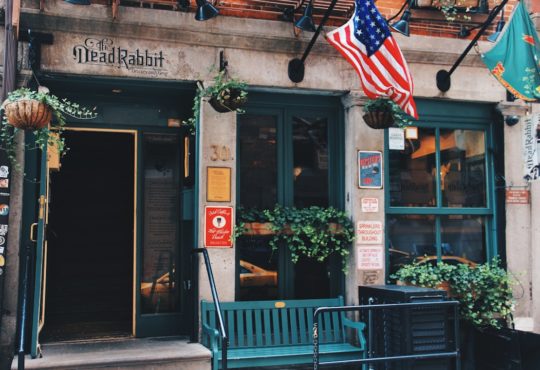
The axolotl, also known as the Mexican walking fish, is a fascinating and unique animal that belongs to the salamander family. What makes this amphibian so special is its ability to regenerate; axolotls can regrow lost limbs, tails and even parts of their hearts and brains. This remarkable ability has made them a subject of intense scientific research, with scientists trying to understand exactly how this regeneration works.
The axolotl has a cute appearance with its external gills that look like fluffy branches on the sides of its head, contributing to its popularity as a pet and in aquaristics. Axolotls can usually be found in a variety of colors, including the classic brown, as well as albino varieties and other color mutations. They are aquatic and spend their entire lives in the water, distinguishing them from many other amphibians that have a terrestrial phase in their life cycle.
Their unique lifestyle and appearance make them an intriguing choice for hobbyists and scientists alike. It is important to understand that axolotls are not traditional pets; they require specific care and attention to remain healthy and happy.
Summary
- An axolotl is a salamander that remains in the larval stage throughout its life and is known for its regenerative ability.
- The axolotl has a long history and is closely associated with Aztec culture in Mexico.
- Axolotls live wild in the lakes and canals around Mexico City.
- Taking care of an axolotl requires specific water temperature, water quality and nutrition.
- There are several types of axolotls, including the albino, gold and wild color varieties.
The history of the axolotl
The axolotl has a rich and intriguing history dating back to the time of the Aztecs. This ancient civilization regarded the axolotl as a sacred animal and believed it had divine origins. In Aztec mythology, the axolotl was associated with the god of fire and knowledge, Xolotl, who, according to legend, came to earth in the form of an axolotl.
This cultural importance has contributed to the fascination with the animal over the centuries, and it remains a symbol of biodiversity and ecological value in Mexico. In the 19th century, the scientific community began to take more interest in the axolotl, especially after the discovery of its regenerative capabilities. Scientists such as Louis Agassiz and later other biologists conducted extensive research on this unique animal.
Unfortunately, over the years, the axolotl has faced habitat loss due to urbanization and pollution, leading to a dramatic decline in their natural populations. Today, the axolotl is considered an endangered species, which makes their status as a laboratory animal and pet even more important for the conservation of this special species.
The habitat of the axolotl

Axolotls are native to the Xochimilco system in Mexico City, where they live in freshwater lakes and canals. This environment is rich in aquatic plants and provides ample hiding places for the axolotl to hide from predators. Water quality is crucial to their survival; they need clean, oxygen-rich water to stay healthy.
In their natural habitat, they are often found at depths of several meters, where they feed on small invertebrates such as insect larvae and worms. In captivity, it is important to create an environment as close to their natural habitat as possible. This means setting up an aquarium with adequate space, hiding places and suitable water parameters.
Using a good filter is essential to keep the water clean, while regular water changes help remove pollutants. Maintaining a temperature between 16 and 20 degrees Celsius is also important, as axolotls are sensitive to temperature changes. By paying attention to these factors, you can ensure that your axolotl is comfortable in its new home.
Taking care of an axolotl
| Metric | Data |
|---|---|
| Average lifespan of an axolotl | 10-15 years |
| Water temperature | 16-18 degrees Celsius |
| Nutrition | Frozen bloodworms, tubifex, mosquito larvae |
| Minimum tank size | 40 liters per axolotl |
| Water Quality | Regular monitoring and filtration |
Taking care of an axolotl requires dedication and knowledge about their specific needs. One of the most important aspects of their care is maintaining stable water quality. This includes regular testing of pH levels, ammonia, nitrites and nitrates to ensure the water is safe for your pet.
It is also important to ensure that the aquarium is properly set up with plenty of hiding places, such as rocks or plants, where the axolotl can hide and feel safe. Nutrition is another crucial aspect of caring for an axolotl. They are carnivores and need a diet rich in protein.
You can feed them with specially designed pellets for axolotls, as well as live or frozen foods such as bloodworms, artemia or small shrimp. It is important to make sure your axolotl is not overfed, as this can lead to health problems. By paying attention to their diet and environment, you can ensure that your axolotl stays healthy and develops well.
Different types of axolotls
There are several varieties of axolotls you can encounter, each with unique characteristics and colors. The most common varieties are the wild-colored axolotl, which has a brownish color with dark spots, and the albino axolotl, which has pale skin with pink or white tones. There are also other color mutations such as leucistic axolotls, which have white skin with pink eyes, and golden axolotls, which exhibit a golden color.
These varieties were created through selective breeding and have contributed to the popularity of axolotls as pets. In addition to color variations, there are also differences in size and physique among different species of axolotls. Some species can grow larger than others, depending on their genetic background and environment.
It is important to consider these variations when choosing an axolotl, especially if you plan to keep multiple specimens together. Learning more about the different types of axolotls will help you better understand which one is best for your situation.
Buying axolotls: what to look out for?

If you are considering purchasing an axolotl, there are several important factors to consider to ensure that you buy a healthy specimen. First, it is essential to purchase from a reliable breeder or specialty store known for its ethical practices. Avoid buying axolotls from unreliable sources or wild-caught, as this can be detrimental not only to the animal itself, but also to biodiversity in general.
When buying an axolotl, it is also important to pay attention to the animal's health. Look for signs of illness such as swelling, discolored skin or unusual behavior. A healthy axolotl should be active and have clear eyes with no discharge or other abnormal symptoms.
Be sure to also ask the seller questions about the animal's care and background so that you are well prepared for the well-being of your new pet.
Common problems and diseases in axolotls
Axolotls, like other pets, can suffer from various health problems and diseases. A common problem is skin infections, which can occur due to poor water quality or injuries. It is crucial to regularly check the water parameters and make sure your aquarium is properly maintained to avoid these problems.
If you notice your axolotl behaving differently or showing signs of illness, such as lethargy or loss of appetite, it is important to take action quickly. Another common problem in axolotls is the risk of choking by swallowing inappropriate food particles or other objects in their environment. Be sure to offer only appropriate food that is small enough for your axolotl to safely consume.
It is also important to remove sharp objects or small decorations from the aquarium that could cause injuries. By being proactive in caring for your axolotl, you can prevent many common health problems.
Axolotls as pets: tips and advice
If you decide to get an axolotl as a pet, there are some important tips and advice that can help you care for this unique animal. First, patience is essential; axolotls need time to adjust to their new environment and can be somewhat shy at first. Give them space to get comfortable and avoid unnecessary disturbances in their aquarium.
In addition, education is crucial to successful care. Take the time to learn more about their dietary, water quality and general care needs before you purchase one. This will not only help your axolotl's well-being, but also your own experience as an owner.
Remember that each axolotl is unique; observe their behavior and adjust your care based on their specific needs. With loving care and attention, your axolotl can live a happy and healthy life in your home environment.
Are you interested in buying an axolotl and want to learn more about how to effectively care for your new pet? It is essential to gather relevant and useful information. An interesting article that could help you is about the role of a content marketer. While this may not seem directly related, a content marketer specializing in pet care can provide valuable and targeted information about taking care of axolotls. Read more about what a content marketer does and how they can help you with reliable information about axolotl grooming at What does a content marketer do?.
FAQs
What is an axolotl?
An axolotl is a salamander native to Mexico. It is known for its distinctive appearance and ability to remain in the larval stage throughout its life, which allows it to retain its gills and breathe underwater.
Where can I buy an axolotl?
You can buy an axolotl from specialized pet stores, breeders or online through reliable websites. Make sure you have the proper permits and knowledge to care for an axolotl before purchasing one.
What are the requirements for keeping an axolotl?
To keep an axolotl, you need an aquarium large enough for the salamander to move around, clean water, suitable food and the right temperature. Axolotls have specific needs, so make sure you are well informed before taking one into your home.
Are axolotls suitable as pets?
Yes, axolotls can be suitable pets for people willing to invest the time and effort to care for their specific needs. They are fascinating to watch and can be an interesting addition to a pet collection.
Are axolotls endangered in the wild?
Yes, axolotls are considered endangered in the wild because of habitat loss and pollution of their natural habitat. Efforts are underway to conserve and protect their populations.






